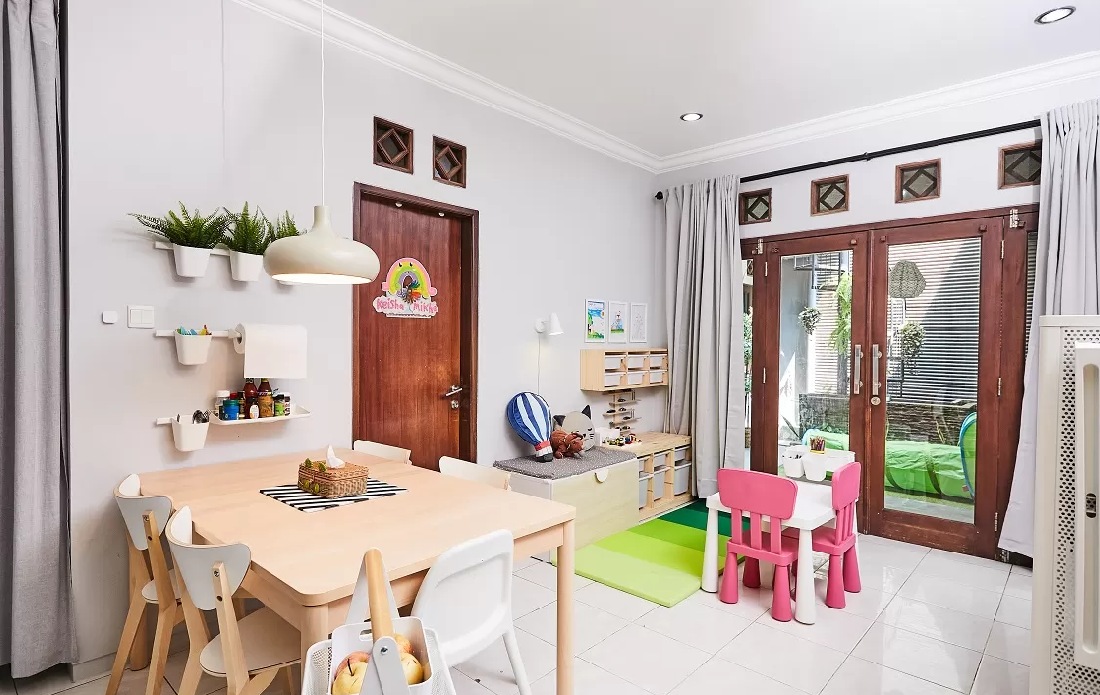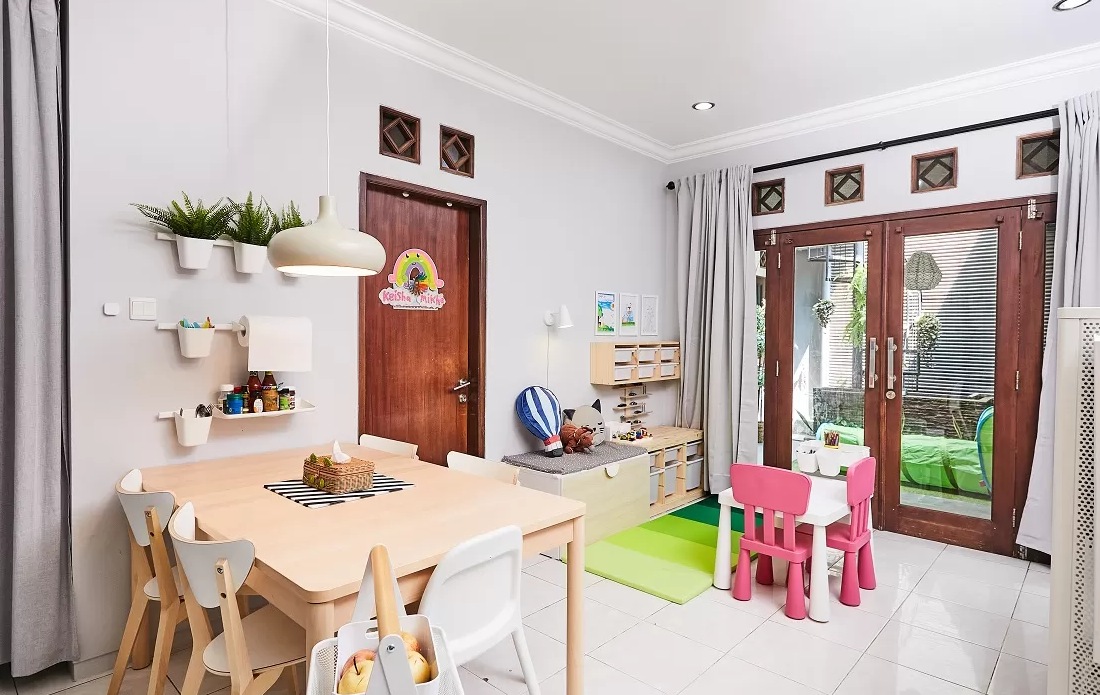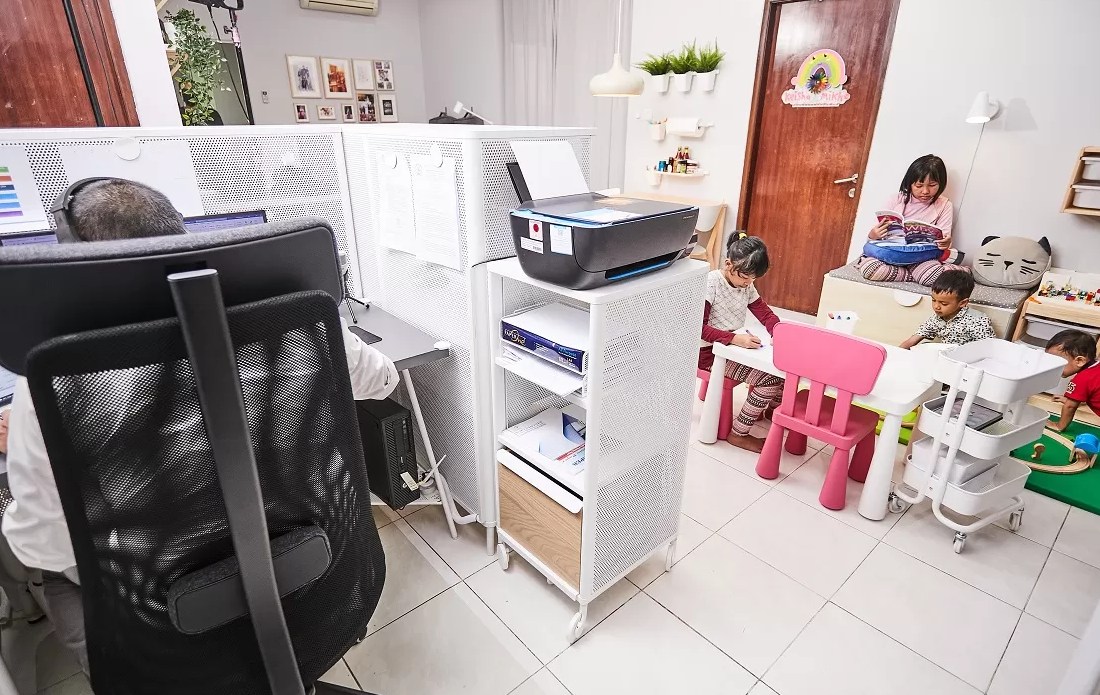Amidst a fast-paced modern lifestyle filled with stress, our living and working environments play a significant role in determining our well-being.
Biophilic design emerges as a solution to create spaces that are not only visually appealing but also beneficial for health and productivity.
Positive impact on mental health
What do you feel when you explore nature or green spaces? A sense of calm and comfort is among them.
The sound of flowing water and the refreshing scent of greenery can help reduce stress and anxiety.
Similarly, biophilic design connects individuals with nature to create a more natural environment. Adding plants and small ponds can serve as therapeutic natural elements.
This design also contributes to improved focus and creativity. An environment rich in natural elements can stimulate the brain to function optimally, enhance concentration, and accelerate cognitive processes.
Therefore, biophilic design is highly suitable for workplaces, schools, or spaces that require high productivity.
Enhancing sleep quality and comfort
Exposure to sunlight during the day helps regulate the body's circadian rhythm, which governs sleep and wake cycles. To support this effect,
lighting that mimics natural sunlight can help maintain bodily balance.
As a result, sleep becomes more restful, and the body feels more refreshed upon waking.
Equally important, natural ventilation in biophilic design ensures better air circulation. Fresh air flowing through windows or natural ventilation reduces indoor pollutants, creating a healthier and more comfortable resting environment.
Examples of biophilic design applications in various spaces
Biophilic design is not only applicable to homes but also to various types of buildings, including offices and public spaces. Here are some examples of how this concept can be implemented in different environments.
Residential homes
In homes, biophilic design can create a fresher and more tranquil ambiance. One application is incorporating natural elements into bedrooms.
Adding indoor plants that serve as natural air purifiers and using organic materials such as wood and linen for furniture and decorations enhances the organic feel of a space.
Moreover, green walls and vertical gardens have gained popularity as solutions for modern homes with limited space.
Offices and workspaces
The integration of green concepts in offices can help improve employee productivity and well-being. Furnish workspaces with indoor plants, wooden furniture, and large windows for natural lighting.
Additionally, break rooms with natural themes have become essential components of modern office design. Wooden and stone materials, along with optimal sunlight exposure, create a relaxing space for employees to recharge before resuming work.
Public and commercial buildings
Public buildings, such as shopping malls, have also embraced this lush and natural concept. Indoor landscapes within malls often feature added green spaces.
Visitors experience a refreshing atmosphere, making shopping more enjoyable and reducing monotony.
Educational spaces
Educational spaces such as schools and universities are areas filled with productive activities. A green learning environment with gardens, trees, and natural lighting has been proven to enhance concentration, creativity, and the well-being of everyone present.
In libraries, natural elements such as indoor plants, wooden furniture, and designs that allow sunlight to enter can create a calmer and more comfortable atmosphere.
This not only supports a better learning experience but also helps reduce stress for students and library visitors.
Integrating biophilic design into the bedroom
The bedroom is a personal space for recharging energy after a day of activities. To ensure it is truly comfortable and relaxing, applying biophilic design can be an ideal solution.
Designing a more natural bedroom
One of the simplest ways to create a natural ambiance in a bedroom is by incorporating indoor plants.
Plants like snake plants, lavender, and peace lilies are perfect for bedrooms as they filter air and create a fresher atmosphere. Additionally, their presence provides a calming effect that enhances sleep quality.
Besides plants, the use of natural colors also plays an important role in creating a calm atmosphere. Choose soothing colors such as leaf green, ocean blue, wood brown, or sandy beige, which resemble natural elements.
These color choices can be applied to walls,
bed linens, or other decorative elements to create a more seamless visual harmony.
Optimizing natural lighting
Biophilic design prioritizes a connection with natural cycles, particularly in terms of lighting. Utilizing natural sunlight in a room can enhance energy and motivation for daily activities.
For example, large windows, skylights, or lighting systems that mimic the natural color transitions from morning to night can be incorporated.
Additionally, using
LED lights with dim, warm lighting on ceilings or bedside tables can create a calm and peaceful ambiance for sleep.
Enhancing natural air circulation
To ensure a truly healthy bedroom, proper air circulation must be maintained. Optimal ventilation design, such as large windows or cross ventilation, allows fresh air to flow in and replace stale indoor air.
Additionally, using organic materials like natural wood or linen for furniture and textiles can help maintain air quality. These materials do not release harmful chemicals that could pollute the indoor environment.
Read also: Comfort in Sleep with Biophilic Design: Bringing Nature into Your Space
Choosing natural materials for biophilic design
Natural materials are key to enhancing comfort and environmental sustainability indoors. Several natural elements can make a living space feel warm, healthy, and perfectly integrated with its surroundings.
Environmentally friendly materials
Create a warm and aesthetic ambiance in a room by using wood or bamboo. These two traditional materials have long been utilized for flooring, furniture, and other decorative elements due to their high durability and eco-friendliness.
Besides wood, natural stone and marble are also popular choices in biophilic design. Their natural textures and patterns add unique character to a space, while their sturdy nature ensures longevity.
Natural stone can be used on walls, floors, or
tables, creating an elegant, nature-inspired atmosphere that blends seamlessly with the environment.
Natural fabrics and textiles
To achieve maximum comfort, choose natural fabrics and textiles as complements to your biophilic home. Linen and organic cotton are excellent choices because they feel soft against the skin, offer good breathability, and are more environmentally friendly than synthetic materials.
These fabrics can be applied to bed sheets,
curtains, and pillow covers to create a calming and healthier atmosphere.
As an added touch, rugs made from natural fibers can be an attractive alternative. Not only do they enhance the beauty of a space, but natural fiber rugs are also safer, as they do not contain harmful chemicals often found in synthetic carpets.
IKEA and biophilic design
IKEA is committed to current trends and creates products that align with nature. Biophilic design is a key aspect of IKEA's approach, aiming to bring warmth and balance to every space.
How IKEA supports the concept of biophilic design
Inspired by the beauty and strength of nature, IKEA incorporates natural materials and wood-like or bamboo aesthetics into its furniture collections.
By prioritizing simple forms, neutral colors, and elements that reflect nature's balance, IKEA products help create a more relaxed and harmonious living space.
Moreover, IKEA offers various solutions to bring natural elements into the home. Examples include special
shelves for indoor plants, lighting that mimics sunlight, and natural-material decorations that enhance the biophilic atmosphere in the home.
Apply the biophilic design concept to your home with IKEA!


